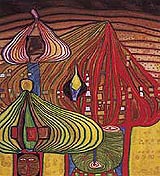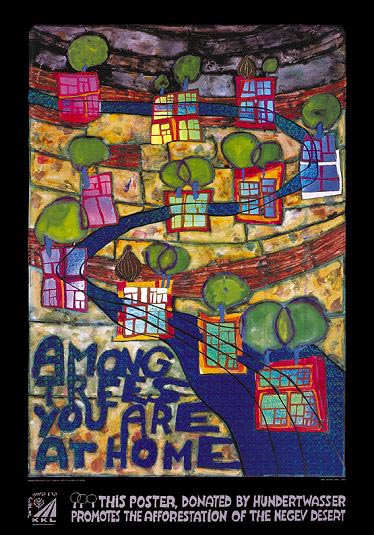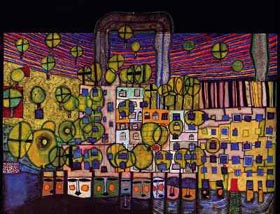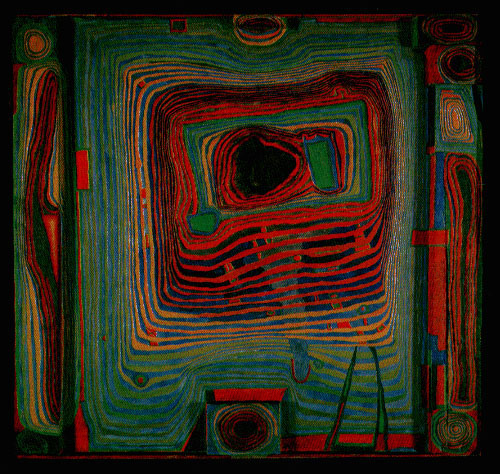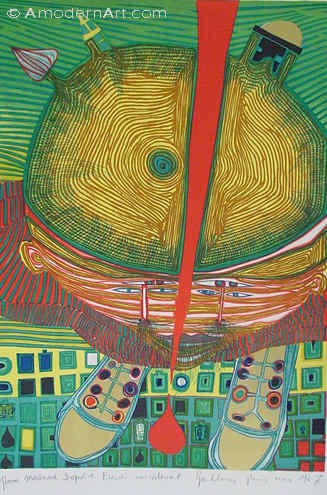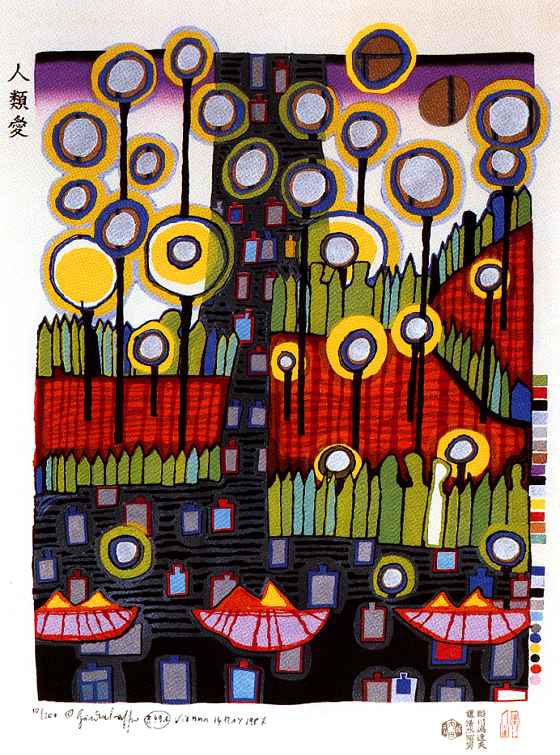|
|
|
|
the Austrian painter
by Justine (Dec 6, 2005) |
|
|
Friedrich Stowasser, well known under the name of Friedrich Hundertwasser was born in 1928. His birthplace is Vienna, in Austria. His father died when he was a baby, so he was brought up by his mother. In 1939, Germany annexed Austria. To escape from German persecutions (he was a Jew), he had to join Hitlerian youths.
When war was finished, he joined the Vienna Fine Arts Academy in 1948. Hundertwasser was inspired by Antonio Gaudi, or his compatriot Gustav Klimmt, but also by Surrealism, Modern Art, Contemporary Art, and by his numerous trips around the world (mainly Marocco, Tunisia, Italy, New-Zeland). But we cannot link him with any group. He used watercolor, engraving, lithography, linography, and serigraphy.
Hundertwasser was not only a painter. He also was a decorator and an architect. His style is characterised by the use of lively, luminous, contrasted colors (hot and cold, dark and light) with gold and silver, labyrinthic and spiral shapes. His work as an architect is the application of his pictures on buildings.
|
We find the importance of Nature, colors, and the refusal of conformity and uniformity. He said : “The straight line is a danger created by humans because it’s a stranger to human nature, to life, to all creations. The straight line is the only non creative line”. He was asked by the Austrian government for stamp’s sketchings, Olympic games posters, etc. In 1982, the city of Vienna gave him a piece of land, in the corner of Lowengrasse and Kegelgrasse for building flats. Three years later, the “Hundertwasserhaus” was built, with 52 flats. It was realized with concrete, bricks, ceramics and timber.
In 1990, the city of Vienna asked him to decorate the thermal station. In 1991, he transformed an old furniture factory into a museum. This museum is now the “Kunsthaus Wien” (Viennese House of Art), and contains most of Hundertwasser’s paintings. Hundertwasser died in February 2000.
|
|
If you wish to react to this article, write to the editor. |
|


